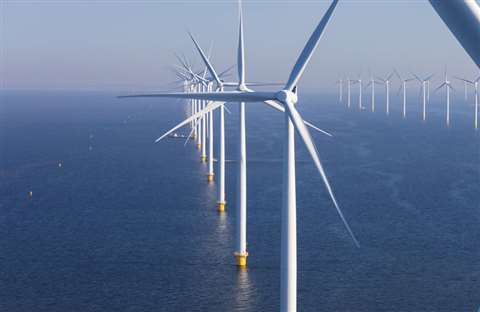Robots ‘key’ for achieving net-zero construction
30 September 2021
Research highlights potential growth of robotics and autonomous systems in wind energy projects
 Robotic and autonomous systems can significantly reduce risk when constructing or maintaining offshore windfarms
Robotic and autonomous systems can significantly reduce risk when constructing or maintaining offshore windfarms
Robots are set to represent a ‘vital’ tool within the onshore and offshore wind energy market by 2030, according to a new report from the Offshore Renewable Energy (ORE) Catapult.
With a global value within the sector of approximately €1.5 billion by 2030, rising to more than €4 billion by 2050, the research shows that robots and autonomous systems (RAS) will be key to the goal of achieving net-zero-carbon wind energy projects.
In terms of energy projects generally, the global RAS market could be worth €9.75 billion by 2050, with these systems likely to be utilised most widely in operations and maintenance activity.
Reducing risk
The report points out that, with windfarms expected to be located in deeper waters, potentially challenging in terms of human accessibility, an increase in the use of autonomous systems is a logical step.
Recalling data from a 2020 ORE Catapult report, the organisation states that two thirds of operations and maintenance costs at offshore windfarms come from people and vessels. Integrating an uncrewed surface vessel into a 2GW cluster site, it said, could reduce capital expenditure by approximately €8.7 million and operational expenditure by some €24.5 million, over a 25-year lifetime.
Furthermore, insurer Allianz reported in 2019 that at least 75% of marine accidents were due to human error.
The new ORE Catapult report says, “Accelerating and investing in the development of advanced RAS will mitigate this risk and means robots will handle not only routine maintenance tasks, but also improve pre-emptive maintenance, which will extend the life of components and turbines at sea, supporting the industry’s waste reduction drive.”
Rise of renewables
As the renewable energy market grows, so oil and gas markets will reduce, although the report predicts medium-term growth in the use of robotics here too, with a peak value of some €5.8 billion for the RAS market in 2030, before a decline to approximately €3.3 billion by 2050.
Gavin Smart, head of analysis & insights at ORE Catapult, said, “The growth of the global energy market presents a remarkable opportunity for robotics and autonomous systems. This is not only the case in offshore renewables, a sector which continues to grow at pace, but also in oil and gas in the short to medium term.
“What is unique about the robotics market is the potential for cross-application technologies. It is likely that the solutions that will maximise performance, increase efficiency and improve safety will be adapted to work across multiple industries – inside and outside energy.
“As we continue to work towards achieving net zero, it is clear that robotics will play a key part.”
STAY CONNECTED



Receive the information you need when you need it through our world-leading magazines, newsletters and daily briefings.
CONNECT WITH THE TEAM








